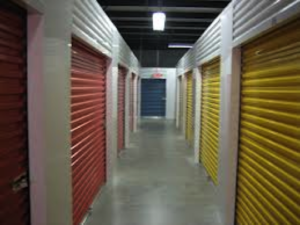Everyone can agree life can get a little hectic, especially around the holidays. Who has time to read Martha Stewart magazine, shop for the ingredients, put out an amazing buffet, craft fantastic decorations, and then be the “hostess with the mostest” at the time of the party? However, nobody wants to wants to miss out on having fun and seeing friends either. So I’ve come up with an easier way, a simplified way, to celebrate Halloween.
Here’s how to host a simple Halloween party:
• On October 1st my two Halloween bins come out of storage. One contains decorations, the same ones I use every year because they are full of memories. And the other of costumes, which we like to try on throughout the month just for laughs.
• Around the second week of October I place a flyer in every mailbox on my street, email the neighbors I know personally, and start spreading the word whenever I see anyone out and about.
My invite reads:
Halloween Party at Danielle’s house
Dress warm, bring a chair & snack to share
BYOB
• On the third week of October I purchase my candy, beverages, and paper products. During this time, I also make sure I have enough fire wood and clean up my fire pit.
• Finally Halloween arrives! I start off the day with a short trip to the Conshohocken Bakery where I buy tomato pies, cakes, granola bars, and cookies for later that evening. We set up a buffet table and our fire pit in the driveway and not long after that, the neighbors arrive with chairs and snacks to share.
Sitting under the stars outside with my neighbors, enjoying the warmth and beauty of the fire, and watching the children make their rounds from house to house is a great way to spend Halloween. It’s relaxing, fun and you don’t even have to clean your house! Try it, you’ll love it.
 I love the idea that someone can use a storage unit as a business location, a man cave, a wine cellar, or as a place to store their cool sports car.
I love the idea that someone can use a storage unit as a business location, a man cave, a wine cellar, or as a place to store their cool sports car.
I love that a college student can use a storage unit to store their dorm rooms over the summer and that someone can store excess furniture while their house is being marketed for sale.
I love that a builder can use a storage unit to store supplies while they are doing a renovation.
I hate the idea that people are using storage units to store old, dirty appliances, inexpensive furniture, and things that are eventually going to go in the trash, get donated, or get sold.
I hate that people abandon their units with valuable items in storage units and that there are reality TV shows based on this.
During the past couple of weeks, we have worked in storage units, and I am so glad we could help clients get out from under the stuff that was being stored— which had less monetary value than the month’s rent of the unit.
Understandably, people go into storage units for a valid reason initially. In the words of my eloquent husband, “storage units can take on a life of their own.” The items being stored take root in the unit, and the bill is on autopay. This makes it easy to forget or avoid the whole thing.
Many times people no longer know what is in their unit— a hint to me that there is minimal value, emotionally and financially.
Before you make the decision to take on a storage unit, think of the following:
If you answer these questions and can develop a plan, rent the unit.
I hope this advice helps you make a good decision and prevents you from being burdened by a storage unit that takes on a life of its own. If renting a storage unit is the right thing for you, I hope that you have picked up a hint or two to simplify the process.
Finding the time and energy to garden has been a challenge for me in the past few years. Our property seems to be getting bigger or am I getting older? Regardless of the reason, I’m not willing to give up the great exercise and satisfaction I get from planting my garden, so I need to get more organized to get it done. I also have to be satisfied with an hour or two here and there instead of a full day of gardening. After I planted my garden last year, I took pictures of the planters and the gardens and made a list of the plants I bought at the local nurseries.
Our garden shed was built on top of an old outhouse and frankly it could withstand a hurricane. It has a waist high counter and wooden shelving. We used leftover linoleum flooring from the kitchen for the floor. It’s just the right size to hold the following:
In the spring:
In the fall after the first killing frost:
After plants have been hit by frost, I like to fill in with fall décor so it doesn’t look so empty. I use some of the more colorful pots I emptied to hold mums and fill in with straw bales, pumpkins, cornstalks and gourds. Organize your gardening so it’s a pleasure, not a chore.
Clutter Tips:
Green Tips:
You know we always hear “Everything has its Place.” It really does. Take a cluttered junk drawer filled with all kinds of mess. Often there are keys, batteries, receipts, tools, money, pens, gift cards, coupons, pencils, candy, stamps, unpaid bills, medicine, and restaurant menus having a conversation. You get the point. This happens when there is no designated area or system for these items. When we search for something and can’t find it, it affects our behavior and emotions. ![]() Yes, unfortunately here comes the yelling at the kids or running late for work because we can’t find the keys.
Yes, unfortunately here comes the yelling at the kids or running late for work because we can’t find the keys.
That is why drawer organizers are a great, efficient, and simple way to transform your space so everything has a proper spot. The goal is to find items when we need them. Imagine grabbing your keys and walking out the door on time for work. What a great feeling.
Here’s how to get started (once you’ve taken measurements and purchased your drawer organizers).
• Empty the cluttered drawer.
• Sort like items together — decide what you’ll keep and discard the rest.
• Take a look…no more clutter. Now grab those keys and go to work.
Happy organizing!
(Images of Organized Drawer owned by Carla Shipman aka Ms. DeClutter)
 A client and I were talking last week about the “hazards” of having too much storage space. If there is room to store items you may or may not use in the future, the decision to keep or discard can be postponed. For some of us, those decisions have been postponed for 20 years!
A client and I were talking last week about the “hazards” of having too much storage space. If there is room to store items you may or may not use in the future, the decision to keep or discard can be postponed. For some of us, those decisions have been postponed for 20 years!
Before I became a professional organizer, I didn’t fully understand the downside of keeping items I didn’t use or love. I thought that if the house looked nice and I could find what I needed quickly, everything was copacetic. I now know that excess can often create fatigue, shame and embarrassment as well as a lack of focus and clarity.
Here’s where I got in trouble: when I decided to remove an item from my living space and the thought of getting rid of it pulled at my heartstrings, down to the basement it went. Why decide now? There’s plenty of room in the basement! My logic was:
See anything wrong with that thinking? I now have a basement full of stuff (neatly stacked and labeled, of course) that I rarely use. My new logic is:
As I’m learning to let go of anything that doesn’t make my life work better, I’m starting to de-clutter my basement. While I don’t have chunks of time to work on it, I spend an extra five or ten minutes in the basement while doing the laundry and make sure I toss or donate items every single week. In time I’ll get through it all.
I look forward to feeling freer and lighter as I let go of what I don’t use and love.
Now that the winter holidays are over, we may find ourselves with a few extra baskets on hand – baskets that arrived holding fresh fruit or bath products.
Baskets, while making a lovely presentation containers, often have awkward shapes and can be challenging to store. Sometimes donating them seems preferable to losing storage space to their clumsy designs. And then again, how can we let them go when there may be a use for them…someday?
Before letting your frustration take over, here are a few suggestions of places around your home that can benefit from the strategic placement of some of these vexing vessels:
So, if you’re ready to cram your baskets into cupboards or send them on their way out the door, take a look around your home and ask yourself if there area any areas that could benefit from some clever containment.
A lovely new basket might be just the solution!